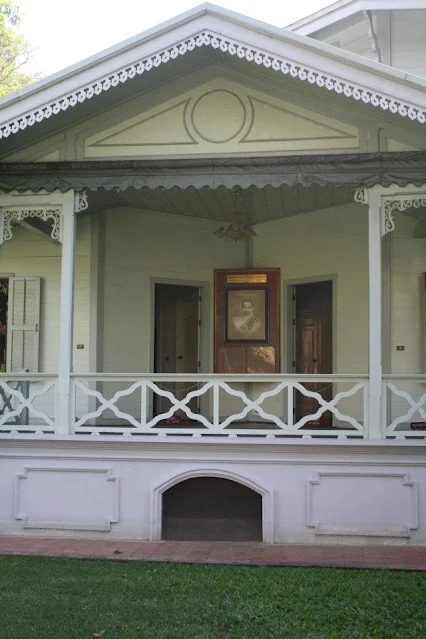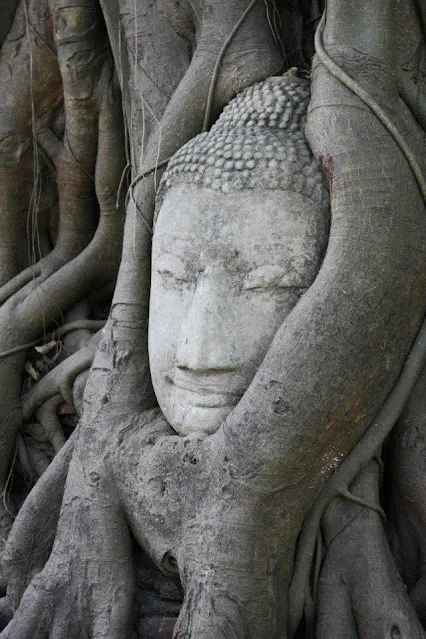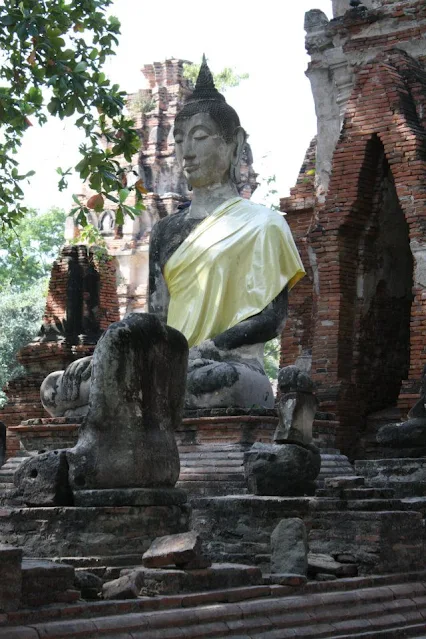Bright and early at 6 a.m., I’m filled with excitement for my adventure ahead (BANGKOK, THAILAND: PLACES TO VISIT). My tour guide is set to arrive at 7 a.m., marking the start of my day trip to Ayutthaya, a place that has been on my bucket list for ages. I’m surrounded by fellow travelers, all seasoned Westerners, yet I feel right at home as the only Indian in the group.
The hour-long journey to Ayutthaya is a treat for the eyes, like driving through a living postcard with endless green paddy fields. Ayutthaya, a UNESCO World Heritage Site, whispers stories of its glorious past, with ancient ruins standing tall and drawing visitors from around the world (VARANASI NORTH INDIA: MYSTICAL JOURNEYS).
Bang Pa-In Palace
Our first stop is Bang Pa-In Palace, also known as
the Summer Palace. At the entrance, we get a briefing about the place and can
choose to explore on foot or take a buggy ride. I opt for the buggy, and it’s a
great decision! With a cheerful driver, I zip around the sprawling palace
grounds, soaking in the beauty all around me.
Upon entering, I quickly learn that decorum is essential, so I buy a traditional Thai sarong to ensure I’m dressed appropriately for this majestic site. The palace unfolds like a storybook, revealing the luxurious lives of Thailand's former royals. With opulent residences and tales of royal extravagance—think multiple wives and children—each corner of the palace tells a piece of history. Though some areas are off-limits for photos, the views are stunning and worth capturing in my memory.

However, Wat Mahathat suffered greatly during the Burmese invasion in the 18th century. As a result, the temple fell into ruin, and many of its exquisite Buddha statues became headless, a haunting reminder of the destruction. Despite its deteriorated state, Wat Mahathat remains profoundly meaningful and continues to draw countless visitors.
One of its most famous sights is a Buddha head entwined in the roots of a bodhi tree, which has become an iconic symbol of Ayutthaya. This unique sight captures the resilience of nature and serves as a powerful metaphor for the temple's enduring spirit. The blend of history and beauty here offers visitors a chance to reflect on the passage of time and the importance of preserving cultural heritage.

Wat Na Phra Men, a charming temple situated by the banks of the Lopburi River. Unlike many other temples in Ayutthaya, Wat Na Phra Men remarkably survived the devastation of war, making it a rare gem in the area. It dates back to the Ayutthaya period and stands out due to its well-preserved structures and serene atmosphere.
The highlight of this temple is the large Buddha statue covered in gold leaf, found inside the ordination hall. This impressive statue embodies the grace and serenity that Buddhism represents. In addition to the main Buddha, you’ll find various deity statues throughout the temple, including the unique "Nine-Faced" Buddha, which is believed to have protective qualities.
A small sermon hall to the right houses the Phra Khantharat Buddha image, surrounded by other deities that add to the temple's spiritual allure. Wat Na Phra Men offers visitors a chance to immerse themselves in the tranquility of the surroundings while appreciating the architectural beauty that has withstood the test of time.

Our final temple stop is Wat Lokayasutharam, known for housing the largest reclining Buddha in Ayutthaya, measuring an impressive 32 meters long and 8 meters high. This enormous statue, often covered in white and gold, is a striking sight and serves as a testament to the craftsmanship of the era. The reclining position of the Buddha symbolizes his entry into Nirvana, offering a peaceful end to his earthly existence.
As we take a quick 20-minute break here, it's impossible not to feel a sense of awe standing before such a magnificent figure. The temple grounds are dotted with smaller stupas and remnants of ancient structures, creating a serene environment for reflection.
Wat Lokayasutharam not only showcases the artistic prowess of the period but also invites visitors to contemplate the teachings of Buddhism and the significance of the reclining Buddha in the broader context of spiritual practice. It's a perfect way to conclude our temple tour, allowing for quiet contemplation before heading back to the bustling energy of Ayutthaya.

With the Ayutthaya tour complete, we board a boat for a relaxing cruise down the Chao Phraya River, enjoying a leisurely lunch onboard, while passing by the temples I have visited, also life on both sides of the river. It was really heart warming, but the sun was somewhat a blister. Once again, I find myself as the only Indian amongst the all Westerners, who seem a bit unfriendly at first. But I strike up a conversation with a young woman from Switzerland, and we end up sharing a table for the cruise.
On the upper deck, I meet some Italian guys who speak little English, and we communicate through gestures and a few words. After about 20 minutes of trying to chat, I retreat to the cooler lower deck, sipping coffee and gazing out at the riverside temples and glimpses of Thai life.

To be continued.
--------------------------------------------------------------------------------------------------------------------
Ms. Nava, a spirited Zen entrepreneur in her 60s, founded Nava's Zen at the vibrant age of 58. With over 22 years as a lecturer, including at Curtin University’s Degree Twinning Program, she dreams of traveling 365 days a year. However, she embarks on her enchanting 'Zen Journeys' whenever her yoga instruction, coaching, and counseling profits allow her to.
































No comments:
Post a Comment